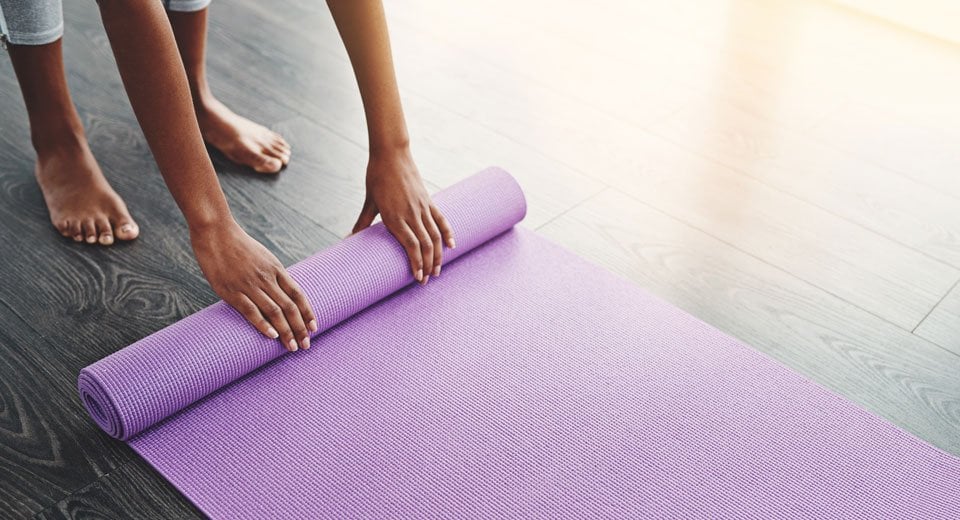Exercising safely after osteoporosis diagnosis

A diagnosis of osteoporosis is difficult for anyone. But for active, athletic people, there is an extra gut punch: the pressure to reevaluate physical activities and, sometimes, give them up for life.
As a Pilates instructor in Falmouth (and someone who had my spinal health restored by Pilates after an extreme backpacking expedition), my awareness of how osteoporosis can play havoc with an exercise routine suddenly accelerated when three students told me they had received the diagnosis. Just when they were anxious to get proper exercise to help manage the disease – with a goal to increase bone mass, improve balance, among other benefits – my students were questioning whether they could participate at all.
With the help of a student, Sandy Dignes of Falmouth, and Paul Dimond, MD, an orthopedic surgeon at Falmouth Hospital, I set out to learn the answer: What are safe, and unsafe, moves in yoga and in Pilates, which in my practice is a mix of yoga, physical therapy, weight work, and calisthenics.
The answer is encouraging: Both Pilates and yoga are excellent and highly recommended exercises for those with osteoporosis (and its precursor, osteopenia). But several moves, including twisting or rolling on the spine, are off limits for osteoporotic clients. The unsafe exercises are those which twist the spine (such as the spinal twist) or place flexion, or stress, on the spine, which could cause the (such as in rolling up, or rolling over, from a lying-down position), which could cause a spinal compression fracture. High-impact jumping is also off-limits.
Dr. Dimond, who has been practicing for 20 years – including a fellowship in hip and knee replacement at New England Baptist Hospital – said that Pilates and yoga, when done with proper modifications, are excellent for those with osteoporosis. He defers to endocrinologists and his patients’ general practitioners for prescribing medicines. But he always adds this advice: “Live a healthy lifestyle, maintain your fitness – not just your weight – and avoid alcohol, smoking, and caffeine.”
Immediately after a diagnosis of osteoporosis, my students say they needed time to absorb the news and perhaps grieve the loss of freedom to exercise in any fashion they choose. For Sandy Dignes, 68, it was a very tough time. As a woman who relishes physical activity and a lifelong Pilates devotee, she was devastated to learn last year that her osteopenia, diagnosed in 2017, had progressed to osteoporosis.
Hard News to Hear
Dignes, a former product manager and strategic manager with two master’s degrees, and her husband, Tom Dignes, had just moved to Falmouth from Houston. One of her first tasks was to find a new physician. She was on her first new-patient visit with Ruth Holland, MD, an internist at Cape Cod Healthcare, when Holland ordered an updated bone scan.
The news from Dignes’ bone scan was a blow: Her T-score, the measure of bone density, reflected several areas of porous bone, including -2.6 in her lumbar spine and -3.5 in her distal left forearm. (Figures higher than -2.5 indicate osteoporosis.)
The psychological effect was immediate.
“It’s kind of depressing.” Dignes said. “It changes your outlook on life. All of a sudden, I was thinking about what I do. I’ve been an active person all my life. There’s always this little voice saying, ‘it’s not a good idea.’ There’s unhappiness because I’m not as good as I was.”
She immediately gave up strenuous bike riding on mountainous terrain, in case she fell and broke a bone. Then she took a careful look at her Pilates practice, which she had loved for years.
“When I started taking Pilates years ago, it just clicked,” Dignes said. “From the start, I liked the strengthening and stretching, and the peacefulness of it, too. With help from Mary, I can modify it so it continues to work for me.”
Dignes has most of the risk factors for osteoporosis: an older Caucasian female with a small frame. Family history also counts, but Dignes didn’t have relatives she could ask. “My mom died too young,” she said, and there was no one else to talk with.
Dr. Dimond is a big believer in the muscle conditioning and strength building of Pilates (and some yoga), which emphasizes core strength. “I fully support it,” he said. Exercises that emphasize balance (perhaps holding on to a wall or surface for safety) are important, too. “Yoga and Pilates increase bone mass and help with flexibility, balance, core strength, and proprioception (awareness of the position and movement of the body),” he added.
Ask Questions Before Proceeding
For anyone with osteoporosis, it is important to talk with your exercise instructor before working out and ask these questions:
- Are you familiar with exercises that are safe and unsafe for osteoporosis?
- Does your regimen include any of the exercises that are unsafe for my condition? If so, do you have modifications?
- Do you include work on balance and fall prevention?
Today, Dignes is doing a variety of wellness activities she enjoys: physical therapy at Cape Cod Rehabilitation in Mashpee, brisk walking with a friend, and regular Pilates. She also reexamined her diet. In early February, she and her husband attended a Cape Cod Wellness Trails seminar, “The Power of Plant-Based Nutrition,” featuring Dr. Kumara Sidhartha, Dr. Miguel Prieto, and Chef Maurice "Mo" Samuels, an integrative nutrition health coach and plant-based chef. Pharmaceutical medicines didn’t work for Dignes, although she maintains a healthy diet, including food sources of calcium, and takes vitamins C and D3, as well as extra calcium.
The outlook for Dignes and others is very positive, Dr. Dimond said. “Done properly, Pilates and yoga, as part of an exercise regimen, are great. You can make gains, no matter your age.”
